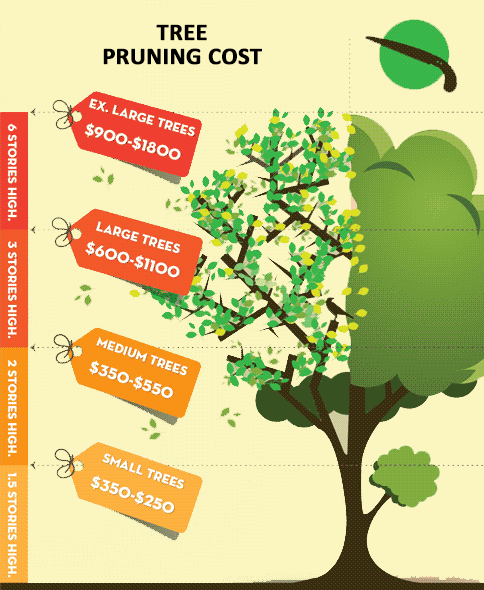When it pertains to developing a landscape that prospers, mastering the art of tree trimming is a must. Visualize being able to shape your trees with precision, guaranteeing their vigor and beauty for many years to come. By learning the essential methods for correct cuts, timing, and structural training, you hold the secret to a growing outside room that will certainly thrill all who encounter it. Yet just how do these pruning techniques truly affect the health and wellness of your trees and the general landscape visual?
Correct Pruning Cuts for Tree Health And Wellness
When it involves maintaining the wellness of your trees, making proper trimming cuts is important. Wrong cuts can cause disease, insect invasion, and overall tree decrease. To guarantee browse around this web-site of your trees, constantly begin by using sharp, tidy devices to make accurate cuts.
Begin by determining the branch collar, an inflamed location where the branch connects to the trunk. Reducing simply outside the collar helps promote proper recovery and minimizes the risk of infection. Avoid leaving stubs as they can invite insects and conditions right into the tree.
Keep in mind to make cuts at a slight angle, sloping away from the trunk, to stop water from merging on the injury. In addition, get rid of any type of dead, harmed, or going across branches to enhance air blood circulation and sunshine infiltration.
Timing and Regularity of Pruning
To maintain the health and structure of your trees, recognizing the optimum timing and frequency of pruning is crucial.
The very best time to prune trees is normally during the dormant season in late wintertime or very early springtime. Pruning during this duration assists advertise brand-new growth once the tree begins budding in the spring.
However, some trees, like spring-flowering ones, are best pruned right after they finish flowering to stay clear of removing following year's flower buds.
Routine trimming is vital, but the regularity depends on the tree varieties and its growth price. For many trees, an annual evaluation to get rid of dead, unhealthy, or going across branches is suggested. Youthful trees might require more frequent pruning to develop a solid structure, while fully grown trees might only require upkeep trimming every couple of years.
Avoid trimming throughout the fall when conditions are much more quickly spread, and refrain from hefty pruning throughout the summer season when the tree is actively expanding.
Training Young Trees for Structure
For establishing strong and healthy and balanced trees, training young trees for ideal structure is essential. By forming a tree when it's young, you established the foundation for a durable and aesthetically attractive fully grown tree.
Begin by determining the main leader, which is the primary upward-growing branch. Encourage the main leader's development by trimming away competing leaders, helping the tree develop a strong central trunk. In addition, eliminate any branches that grow internal or downward, as they can create structural issues as the tree grows.
It's important to space out side branches evenly around the trunk to promote balanced development. As the tree grows, continue to monitor its growth and trim as needed to preserve its form and structure.
Effectively trained young trees are less most likely to establish weak crotches or chock-full branches, minimizing the risk of damage throughout storms. Spending time in training young trees will settle with a perfectly structured and resistant tree in the future.
Final thought
Since you have grasped the essential techniques of tree pruning, your landscape gets on its method to flourishing. By using sharp devices, making exact cuts, and properly timing your pruning sessions, you are ensuring the health and wellness and durability of your trees. Remember to consistently inspect and keep your trees to maintain them thriving. With your newly found understanding, your landscape will certainly continue to grow perfectly for many years to come. Maintain Recommended Webpage !
